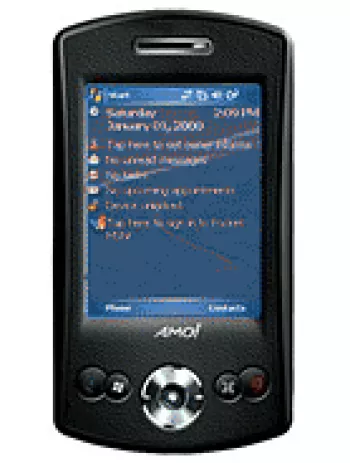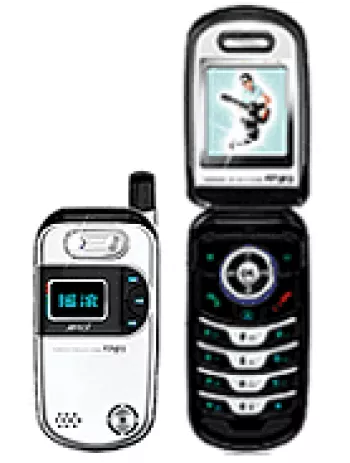
Overview of Amoi A865
The Amoi A865, announced in the second quarter of 2006, represents the classic feature phones era. Discontinued now, it once offered functionalities that catered to essential mobile phone users. Its compact and durable design along with basic multimedia and communication features made it a useful device at the time.
Design and Build
The Amoi A865 comes with dimensions of 90.3 x 45.9 x 22.8 mm, making it compact enough to fit comfortably in one’s pocket. With a weight of 125 g, it strikes a balance between being lightweight and sturdy. The phone supports a Mini-SIM and features a traditional candy bar design prevalent in mobiles from that era. The silver color gives it an elegant and understated appearance that was quite popular.
Display
This device features a 2.0-inch TFT display capable of delivering 256K colors, which was a standard for feature phones during its release. The screen resolution of 176 x 220 pixels ensures basic display clarity suitable for viewing messages and simple multimedia content. With a screen-to-body ratio of around 30.4%, it offered sufficient real estate for users to navigate through the phone's features.
Camera Capabilities
Amoi A865 is equipped with a single 2 MP camera which offered basic photograph and video capabilities. The inclusion of a rotating lens was quite innovative, allowing users to take photos from various angles and even capture selfies—a novelty for the time. Although it didn’t have a dedicated selfie camera, this feature compensated by providing some flexibility.
Performance and Storage
Although specific details about the processor and RAM are unknown, the device functioned as a standard feature phone with basic processing capabilities for calls, messaging, and simple apps. It includes 10 MB of internal storage, a reasonable capacity for storing contacts and a limited number of text messages alongside other necessary files, albeit expandable via a dedicated microSD card slot—a convenient option for users needing additional storage space.
Network and Connectivity
Supporting GSM 900/1800/1900 bands, the Amoi A865 was suitable for 2G network bands which facilitated wide coverage and reliable connectivity for voice and text messaging services. It was compatible with GPRS Class 10 for basic internet functionalities and came equipped with a WAP 2.0 browser, although it did not support higher-speed EDGE networks. Connectivity options included FM radio and a miniUSB port, but it lacked Bluetooth and WLAN capabilities, reflecting its focus on core functionalities over expanded connectivity.
Battery Life
A removable Li-Ion 720 mAh battery powers the Amoi A865, delivering a standby time of up to 180 hours and a talk time of approximately 5 hours. This level of battery performance was average, suitable enough for sustaining daily essential needs without requiring frequent recharging.
Sound and Multimedia
The device was equipped with downloadable polyphonic, MP3, and MIDI ringtones, adding some customization options in alert tones. However, it did not include a loudspeaker or a 3.5mm headphone jack, which somewhat limited its multimedia capabilities. Users relied on the vibration alert mode and audio playback through the device’s small speaker.
Software Features and Usability
This feature phone supported basic messaging services like SMS and MMS, catering to communication needs effectively. Java MIDP 2.0 compatibility allowed for running simple Java-based applications and games, providing entertainment and utility functionalities. While not highly advanced, the phone included some onboard games and supported downloadable content for additional options.
Conclusion
The Amoi A865 stood as a representation of the feature phone era, focusing on core phone functionalities with essential multimedia and internet browsing capabilities. Although it lacks modern features like smartphone-level connectivity and processing power, its compact design, solid build, and user-friendly interface made it a significant device in the mid-2000s mobile phone market. Designed for the users who needed reliability and ease of use, the Amoi A865 served its purpose well in its active years.
Key Features of Amoi A865
- Compact dimensions: 90.3 x 45.9 x 22.8 mm and lightweight at 125 g.
- TFT display with 256K colors and a 2.0-inch screen.
- Expandable memory via a dedicated microSD slot.
- Main camera with 2 MP and a rotating lens feature.
- FM radio for entertainment on the go.
- Removable Li-Ion 720 mAh battery with up to 5 hours of talk time.
- Supports downloadable polyphonic, MP3, and MIDI ringtones.
Amoi A865 Disadvantages
- Only supports GSM technology; lacks 3G and 4G network support.
- Discontinued model; no longer officially supported or updated.
- No EDGE capability, limiting data speeds to GPRS Class 10.
- Small display size of 2.0 inches with a low resolution (176 x 220 pixels).
- Limited internal memory of 10MB, although expandable via microSD.
- No front-facing camera for selfies or video calls.
- No loudspeaker for hands-free audio or speaker use.
- Lacks a 3.5mm headphone jack for standard audio accessories.
- No Bluetooth or WLAN capability for wireless connectivity.
- Lack of GPS positioning feature.
- Limited battery capacity at 720 mAh, providing up to 180 hours standby and 5 hours talk time.
- Basic and outdated operating system with limited smartphone features.
View Also
More Phones
All Rights Reserved +13676 Phones © Mobilawy 2025

























